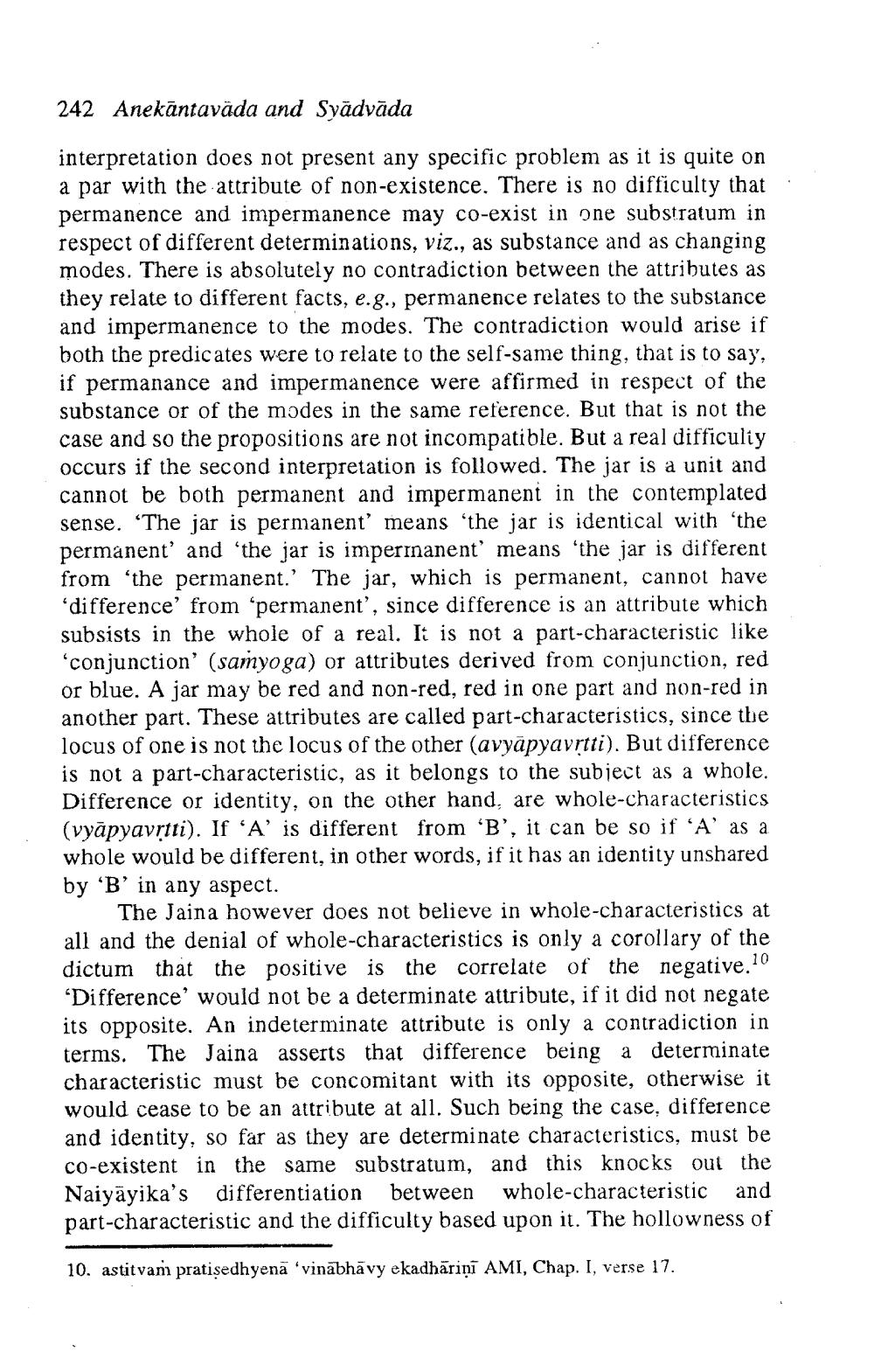________________
242 Anekāntavāda and Syādvāda
interpretation does not present any specific problem as it is quite on a par with the attribute of non-existence. There is no difficulty that permanence and impermanence may co-exist in one substratum in respect of different determinations, viz., as substance and as changing modes. There is absolutely no contradiction between the attributes as they relate to different facts, e.g., permanence relates to the substance and impermanence to the modes. The contradiction would arise if both the predicates were to relate to the self-same thing, that is to say, if permanance and impermanence were affirmed in respect of the substance or of the modes in the same reference. But that is not the case and so the propositions are not incompatible. But a real difficulty occurs if the second interpretation is followed. The jar is a unit and cannot be both permanent and impermanent in the contemplated sense. 'The jar is permanent' means the jar is identical with the permanent' and 'the jar is imperrnanent' means "the jar is different from the permanent.' The jar, which is permanent, cannot have
difference' from 'permanent', since difference is an attribute which subsists in the whole of a real. It is not a part-characteristic like 'conjunction' (samyoga) or attributes derived from conjunction, red or blue. A jar may be red and non-red, red in one part and non-red in another part. These attributes are called part-characteristics, since the locus of one is not the locus of the other (avyāpyavrtti). But difference is not a part-characteristic, as it belongs to the subject as a whole. Difference or identity, on the other hand, are whole-characteristics (vyāpyavrtti). If 'A' is different from 'B', it can be so if 'A' as a whole would be different, in other words, if it has an identity unshared by 'B' in any aspect.
The Jaina however does not believe in whole-characteristics at all and the denial of whole-characteristics is only a corollary of the dictum that the positive is the correlate of the negative." “Difference' would not be a determinate attribute, if it did not negate its opposite. An indeterminate attribute is only a contradiction in terms. The Jaina asserts that difference being a determinate characteristic must be concomitant with its opposite, otherwise it would cease to be an attribute at all. Such being the case, difference and identity, so far as they are determinate characteristics, must be co-existent in the same substratum, and this knocks out the Naiyayika's differentiation between whole-characteristic and part-characteristic and the difficulty based upon it. The hollowness of
10. astitvam pratisedhyena 'vinābhāvy ekadharini AMI, Chap. I, verse 17.




